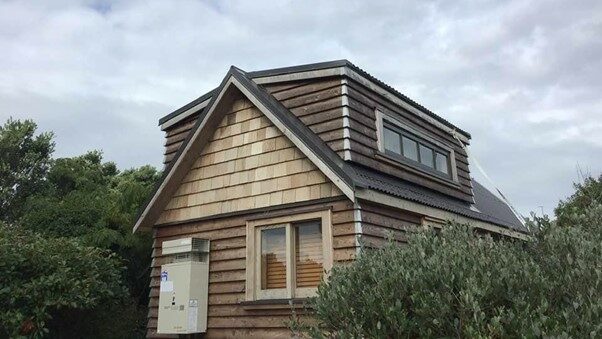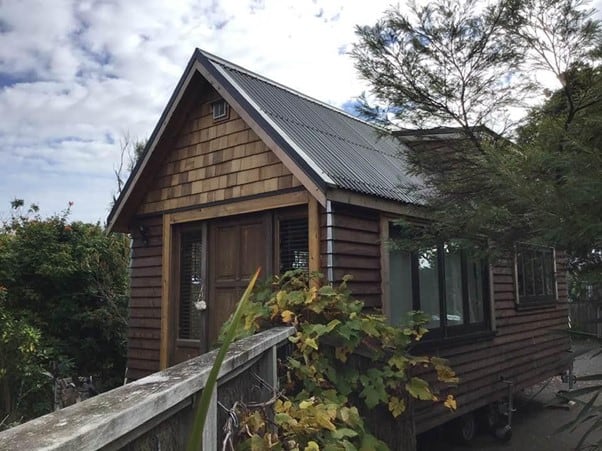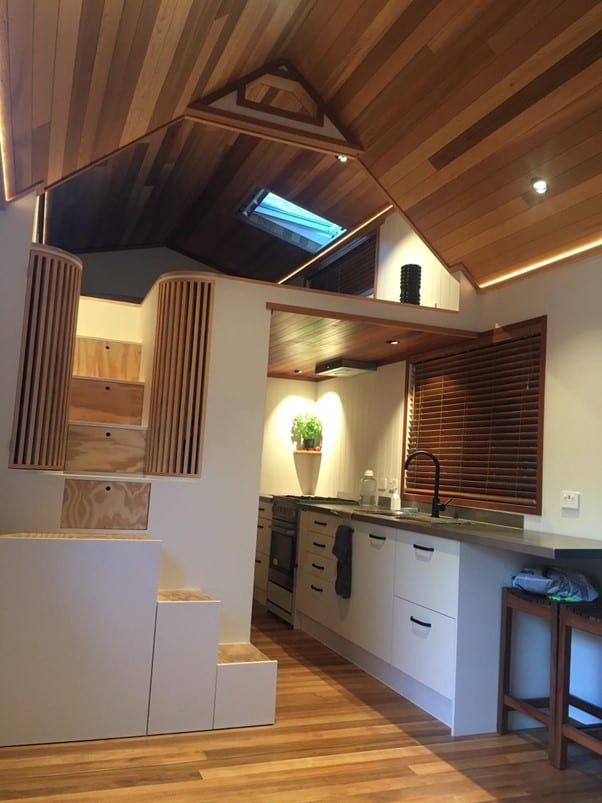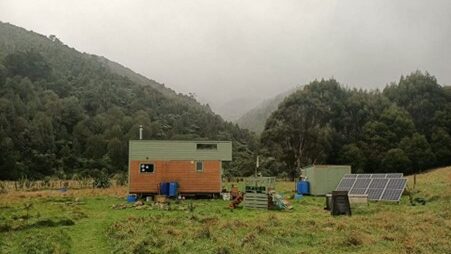The overlooked opportunity in response to the housing problem and climate emergency
By Sahra Kress, 25 August 2022

I have a lot I could say about living simply, but I will restrain myself to a few brief paragraphs about so-called ‘tiny houses’, and let the pictures say the rest.
These small dwellings are now ubiquitous nationally (indeed, internationally) and offer affordable, healthy housing for people, typically younger people, families including those with young children, and some older retired folk. An ideal response to the housing crisis and looking after the most disadvantaged people in our community. As a community midwife, I see few simple solutions to complex problems. But having witnessed multiple examples of how simple housing can change lives, as well as having my personal experience of living in a tiny 32sqm cottage, I can confidently say this is an overlooked opportunity, and there are multiple benefits. There is joy in minimalism, less maintenance pressure, less debt, less expense altogether. This offers up greater options, and more freedom to reconsider priorities.
In this time of desperately needing to work towards enabling collective wellbeing within ecological limits, we need housing that uses less resources, has less environmental damage, and is adaptable to climate impacts. The carbon footprint of building a house depends on all kinds of things, including the size of the house and the types of materials chosen. Tiny house dwellings can be made with quality reused materials, and of course can be moved if built on a wheeled frame: helpful for facing flooding, sea-level rise and earthquake risks. Easy and quick to heat, with utter cosiness in winter; breezy decks in summer.. here is a simple strategy for equitable access to “quality, not quantity” in life for communities.
My brother is an international pilot, who reached the top of the aviation career ladder and, unable to avoid the horrifying reality of climate destruction, came to plant trees and build a tiny house on my land while he went back to university. Below is the dream home he built, with the help a tiny house master builder, using naturally sourced materials.
Another example is this quote from one of the families whose baby’s birth I attended:
“Off grid Tiny House living has added a depth to our lives that previous homes haven’t been able to achieve before. It has encouraged us to spend more time in the garden and outdoors. It has opened up a whole world of possibilities about survival. It has allowed us to ask ourselves: What do we really need to survive? What does true comfort mean to us and what’s important to us as a family?
We are a family of four with two young children who live in a 6.1mx2.3m off grid Tiny House in rural Paraparaumu. Our Tiny has allowed us to deeply understand the seasons. To prepare for them. To roll with them and to really look forward to them. We are constantly faced with the question ‘do we really need this possession?’ and if so then what do we need to let go of to make way for it.
Life in a Tiny as a family of four for us is all about adapting to change. Moving with what needs to come next. We are always adapting our space to the growing needs of our family. Tiny House living has allowed our family to become rich in the true values of life and it has allowed us to avoid the terrestrial struggle of maintaining a huge mortgage for a home that is full of unnecessary material possessions. We only have what we need, we only keep what we love, and we are grateful for the warmth that a small space brings for us.”
So yes, tiny houses provide big inspiration. If you’ve been dreaming of owning your own home, it might actually be within reach if you consider making do with less. Knowledge, inspiration, connection.. there is a swell of enthusiasm for this rapidly expanding alternative living movement. A Tiny House Expo in October will help people experience NZ’s largest Tiny House display village and hear real-life stories of those who took the leap.
So why is this not a more common choice for people? Especially those desperately in need of housing options? Because there are bylaws preventing this low-impact, beautiful housing option for much of our region. This has led me to write to Council, as I am concerned that the matter of housing densification is being viewed in a limited way. The government’s plan for maximising dwellings on residential sites will forever change the way we live in and experience the beautiful Kāpiti district. There may be a need for such densification in places, but we need to strongly advocate for an alternative, low-cost, low-impact, healthy housing initiative which can contribute to densification as well as housing affordability: moveable ‘tiny house’ dwellings, built to building code standards with permanent building materials. There are examples such as in Fresno, California, where the anticipation of housing shortages was met with exactly this creative solution. The amended bylaws allowed for one tiny house per residential lot, plumbed into the mains sewer system, with requirements for safety in terms of electrical and gas. Such a development would position Kāpiti Coast District Council as a progressive Council enabling provision of affordable, healthy housing whilst also meeting the requirement for housing intensification.
True progress toward an equitable and sustainable world requires those who are over-consuming to move to far more materially ‘simple’ and less energy-intensive ways of living. It means focusing on what is sufficient to live well, and creating new patterns of consumption, new systems of production, and new governance structures that promote a ‘simpler way’ of life. Our essential needs can be met in highly localised and low-impact ways, while maintaining a high quality of life. As described by the Simplicity Institute, we need to seek to provoke a broader social conversation about the need to transition away from growth-based, consumer societies toward more resilient and rewarding societies based on material sufficiency and reduced energy requirements. Rethinking growth and consumerism in an age of biophysical limits and economic instability cannot be avoided. The only question is how do we work together to enable collective wellbeing within ecological limits?
Additional References
What is a Tiny House:
First Tiny Homes Village Launches in New Zealand:
https://www.oneroof.co.nz/news/first-tiny-homes-village-launches-in-new-zealand-37502
NZ Tiny House Expo:
Degrowth Aotearoa NZ (DANZ):




